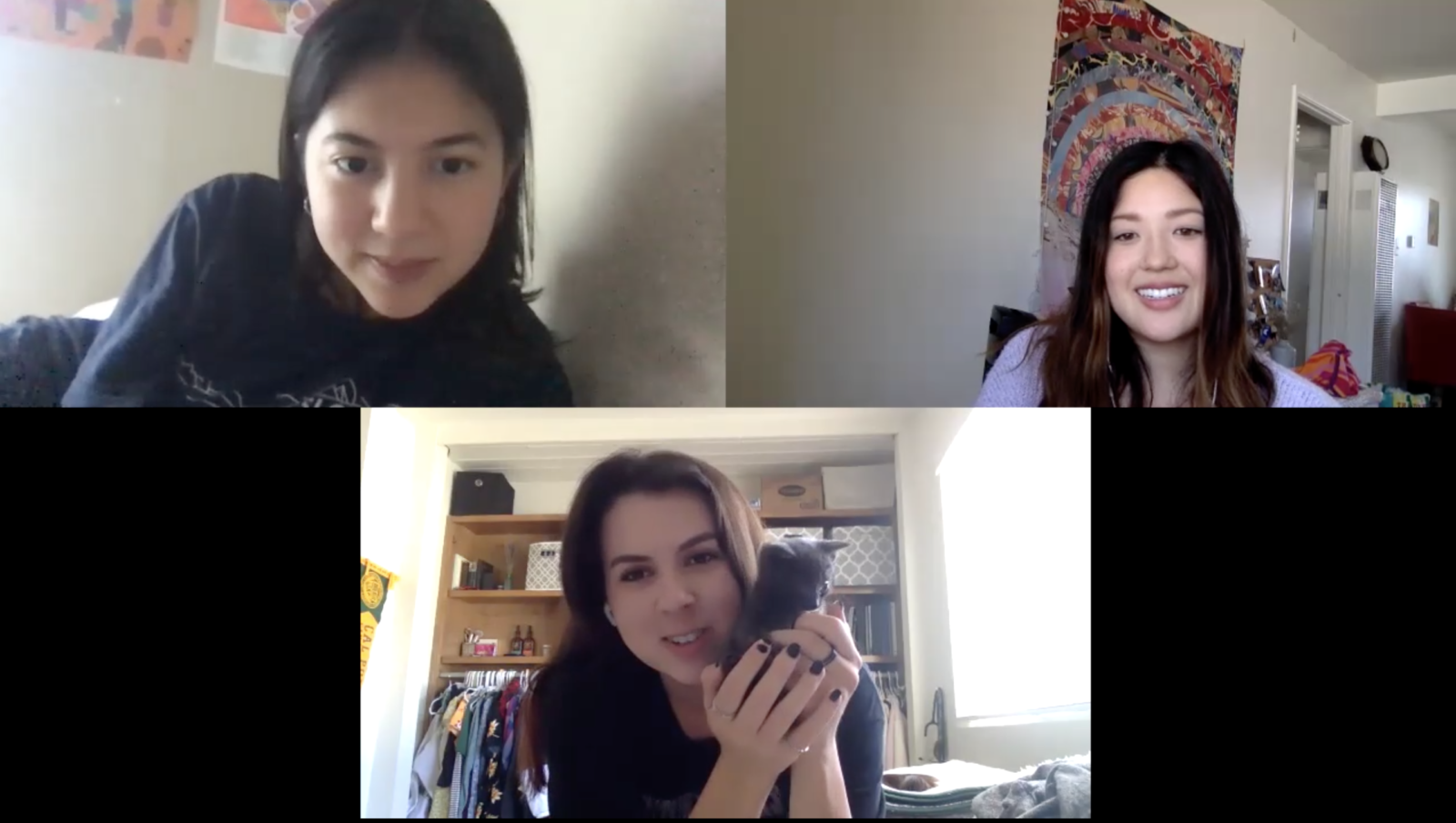The beginning of the quarter felt like one big question mark, a reflection of all of the unknowns weighing on the world. I was super curious about how a journalism senior project class was going to be structured virtually, a concept so different from my previous expectations. Of course, Brady Teufel had a game plan for the class— in pairs, we would start off by each creating a multimedia profile of a Cal Poly student.
After some trial and error in finding a source, Riana Butler and I settled on profiling someone actively involved in the Cal Poly Cat Program (CPCP), the university’s nonprofit cat shelter. I had recently seen a CPCP Facebook post, and I began to wonder what was happening behind the scenes at the shelter. I had also come across an article from The Tribune called “How does Cal Poly care for 10,000 campus animals during the COVID-19 shutdown?,” which was great, except for that it focused exclusively on livestock. Riana and I hoped that interviewing a volunteer staff member would not only lend the program some recognition, but also provide us with a really interesting subject matter.
As the designated strategy/engagement and word half of the team, my first step was to reach out to a member of the program. I sent a message to the shelter’s Facebook account and hoped for the best. Luckily, the CPCP social media coordinator, Andrea Brkic, was quick to respond and excited about the idea. She gave me the emails of the two managers, Ali Chavez and Sam Svetovac, who I then contacted. Ali responded saying she would love to be interviewed and offered to provide us with any visuals if needed. I was happy to see that she was so willing to help us out with our project.
With Ali buckled down as our main source, the next course of action was to do some social media outreach on Facebook, Instagram and Reddit to gauge public interest. From the responses, we found that people were most intrigued by kitten care and adoption rates, which we took note of for our upcoming Zoom interview with Ali.
Our first interview with Ali went really well; she answered all of our questions with detail and enthusiasm, even introducing us to her three foster kittens, Debby, Dorothy and Derik. We gained a lot of insight into what Ali’s day-to-day life has been like for the past few weeks and how much her involvement at the shelter has helped her cope with the current times.
“I’m just trying to see corona and the quarantine in as positive of a light as I can,” Chavez said. “I’ve been trying to keep myself looking at like, ‘Oh, so instead of how many people are getting corona in SLO County, why don’t I look at how many cats have been adopted in SLO County?’ Or like, I try and turn everything and avoid the negative media as much as possible, and my cats obviously keep me happy every day.”
We also learned about the community’s increased interest in fostering and adopting cats. According to Ali, when the shelter-in-place order was issued, the shelter had about 40 cats. Now, about 20 cats remain, and they are still in popular demand. Ali said she is appreciative of everyone who has been supporting the shelter, but she does have concerns about SLO’s shelter-in-place aftermath.
“I am a little worried that after quarantine lifts, all these cats are going to come back to the shelter, so we’ve definitely been having to vet our adopters a little bit more harshly just because we want these cats to stay in their homes,” Chavez said.

Riana got about an hour’s worth of footage to sort through for the video, and Ali also texted us a plethora of b-roll she filmed of the shelter and her foster kittens. Riana also created a “Can Cats Get Coronavirus?” infographic in hopes of debunking any misconceptions about feline coronavirus. We scheduled one more interview with Ali a couple days later to ask her some follow-up questions. She syringe-fed her newest foster kitten, nicknamed “Goops,” throughout the call, giving us another great glimpse into her daily routine.
“My favorite part of the video process was finding a unique angle and piecing the clips together,” Butler said. “It was difficult at first because there was so much footage, but at the end, it was satisfying to see the result and know that Ali and the cat shelter will be getting a spotlight that they definitely deserve.”
The creation of Ali’s multimedia profile was an extremely unique experience, as it was done 100 percent digitally. We were blown away by Ali’s dedication to our project and really enjoyed learning about her experience as a CPCP manager. We hope to share her story with as many people as possible and to bring more awareness to the shelter!
